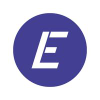Customer
Our client is the leading global manufacturer and supplier of linear motion solutions, which incorporate state-of-the-art designs, components and digital technology. The company has more than 1250 employees and 6 manufacturing units in Europe, Asia, and North America. They produce Linear motion and Actuation solutions used in industrial automation, medical applications, and mobile machinery. They also design, manufacture, and customize linear motion components - linear actuators, guides, ball, and roller screws that meet a variety of industrial applications, with a focus on medical, automotive manufacturing, and mobile machinery.
Challenge
Our client produces linear actuators - an actuator that creates motion in a straight line. It can be used for many different things. One of them is, for example, to widen the operating range of the collaborative robotic arm. These robotic arms are used in a variety of industries, such as medical, automotive and mobile.
These linear actuators are useful because without them, if a producer needed a wider operating range for the robotic arm, they would have to buy a bigger robot which is expensive. This solution provides additional plug-and-play 7th linear axis to the robot.
With slide kit and lift kit, they are giving their clients an option to extend the operating range of robotic arms without having to buy a bigger robot.
Slide kit is a linear axis for collaborative robots that is used to extend the horizontal operating area of the robot.
Lift kit is a system that includes a lifting column used to increase the reach of the robotic arm by moving it along a vertical axis.
With this software, the lift kits and slide kits would be controlled through the robotic arm controller.
This is where our collaboration started.
At the beginning of our cooperation, we had three main requirements. They wanted to:
- Keep track of the budget and be cost-effective
- Minimize time to market – have a stable MVP as soon as possible
- Have high quality and control over quality
We had to plan the solution and all project activities with these three main requirements in mind.
Solution
Universal Robot Project
The first collaboration between them and Enlight Engineering started with a project during which we had to integrate slide kit with Universal Robots based on a previous solution for lift kit which our client already created.
Based on the experience gained through integration with Universal Robots, our client initiated the project for creating a universal platform for integration with the robot from any manufacturer.
That is how a Universal Integration Platform project came to life.
Universal Integration Platform
The Universal Integration Platform was going to be a universal lift kit and slide kit controlling platform. This platform would be compatible with all collaborative robotic arms, regardless of the manufacturer. It would allow our client’s clients to manage lift kits and slide kits for any kind of collaborative robotic arm.
The input we received from our client was to use TCP/IP protocol but to make the solution modular so that it can be easily modified to support other protocols as well. Our team designed the solution which allows the integration with any protocol. This made it possible to create a universal platform for managing lift kit and slide kit for any robot manufacturer.
They gave us the initial set of commands which we further revised, expanded, and optimized. We have made a server application with a revised and expanded set of commands that apply to every collaborative robot. This means that any client can use a different set of commands exported by the Universal Integration Platform, for specific needs of its industry.
Test-driven development
Before the initial start of the Universal Integration Platform, we asked our client for the definition of the exact requirements for the universal integration platform that would manage lift kit and slide kit.
Our team wrote and coded tests that would verify if the parts of the platform were working once the implementation had started.
After any change in coding, automatic check-ups (end-to-end tests) are used to verify whether every component of the platform behaves properly. When we started coding, tests started to pass, so we used them as a guideline in our work.
Why did we use this testing method?
The benefit of this approach is that it can detect any mistakes or issues in the coding of the server application early in the process. Detecting mistakes early is crucial since it will lower the costs of fixing mistakes. Also, it will prevent the problems that could emerge in the later phases of the project.
How did we make sure the three main requirements we received at the beginning of the project were fulfilled?
Faster time to market:
- Engineers involved in the project were seniors and the domain knowledge was increasing fast
- There were enough people on the team so that if someone must leave or have a break the project could continue without interruptions
- The team was in the performing stage because they already worked on the pilot project prior to the Universal Integration Platform and had their own way of working
- The team culture was clear, and everyone was aligned
Cost-effective:
- All costs were known in advance and accurately calculated
- The payment system was organized in a simple and clear way
High quality:
- Everyone knew the Way of Work and was following the agreed rules
That is the main benefit of having your own dedicated team within our company.
This model of cooperation in most cases outperforms in-house team extension because of having the entire team in their performing stage with an already agreed and known way of work dedicated to your project from the start.


